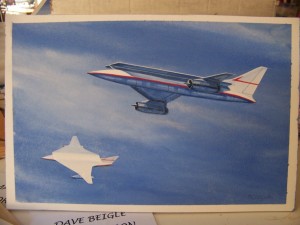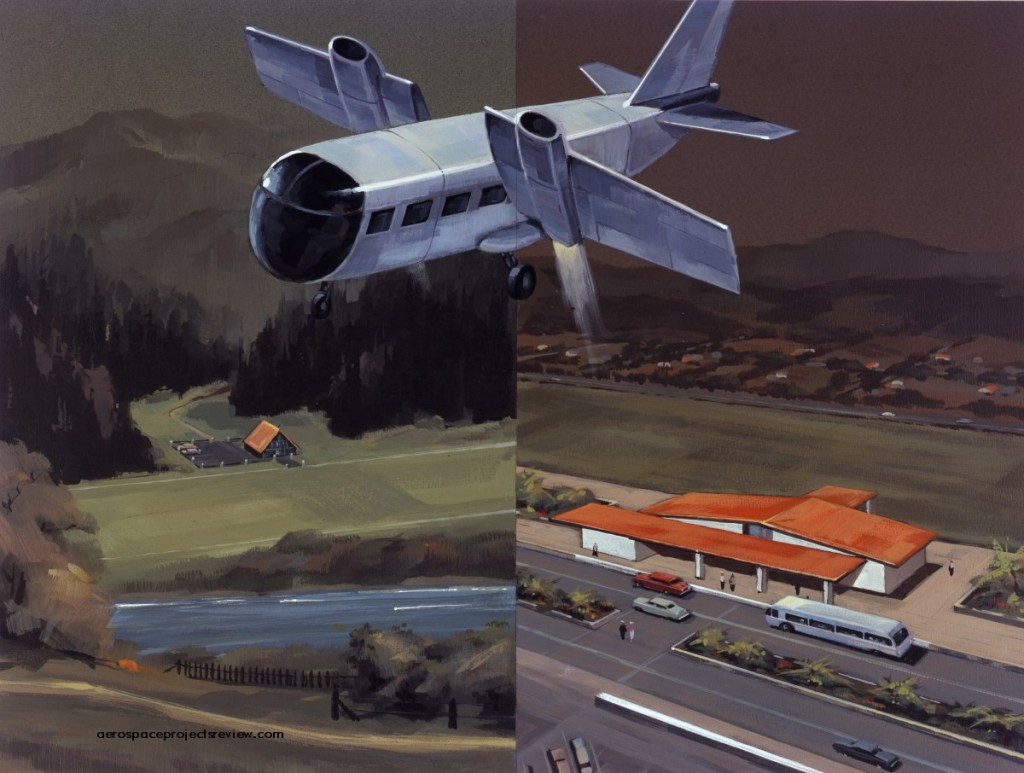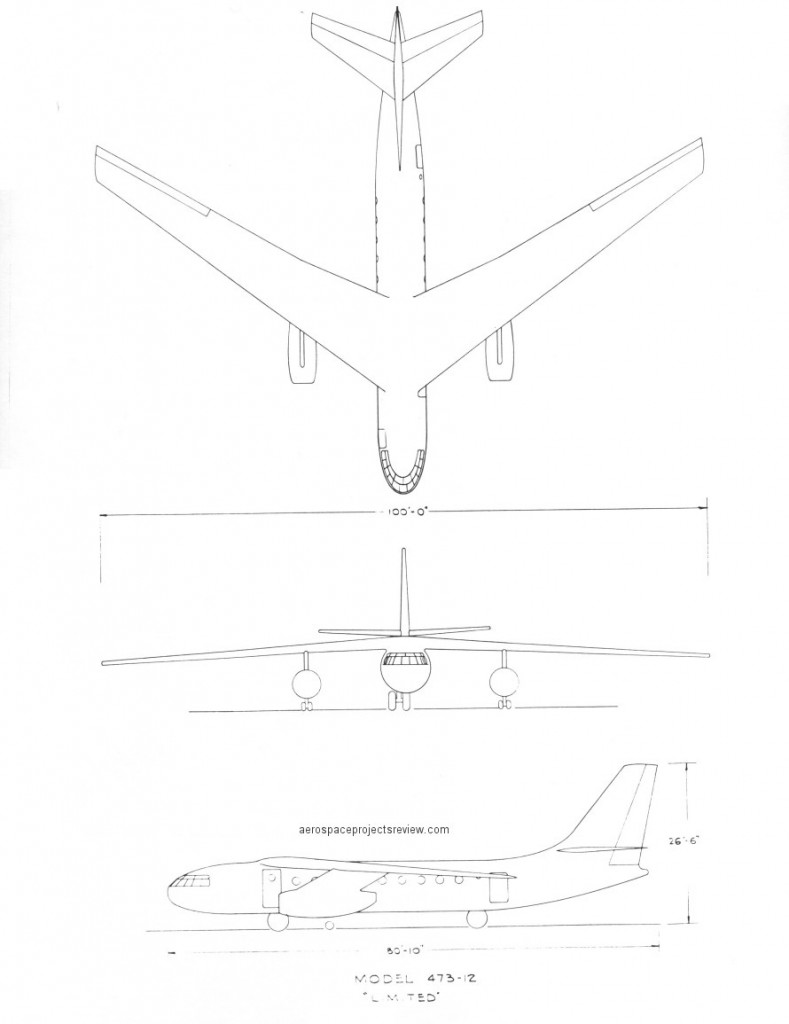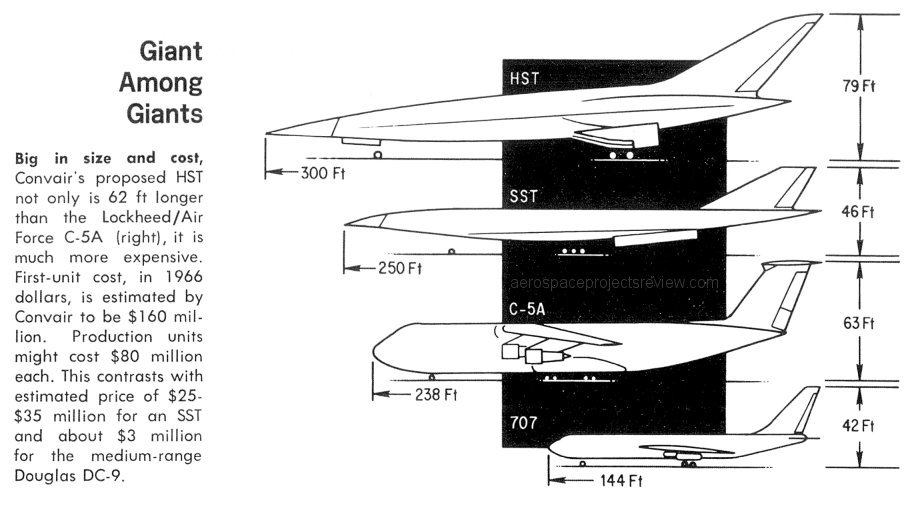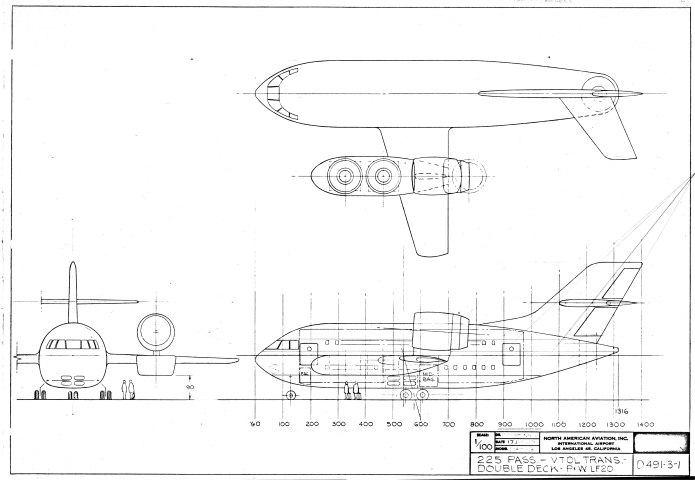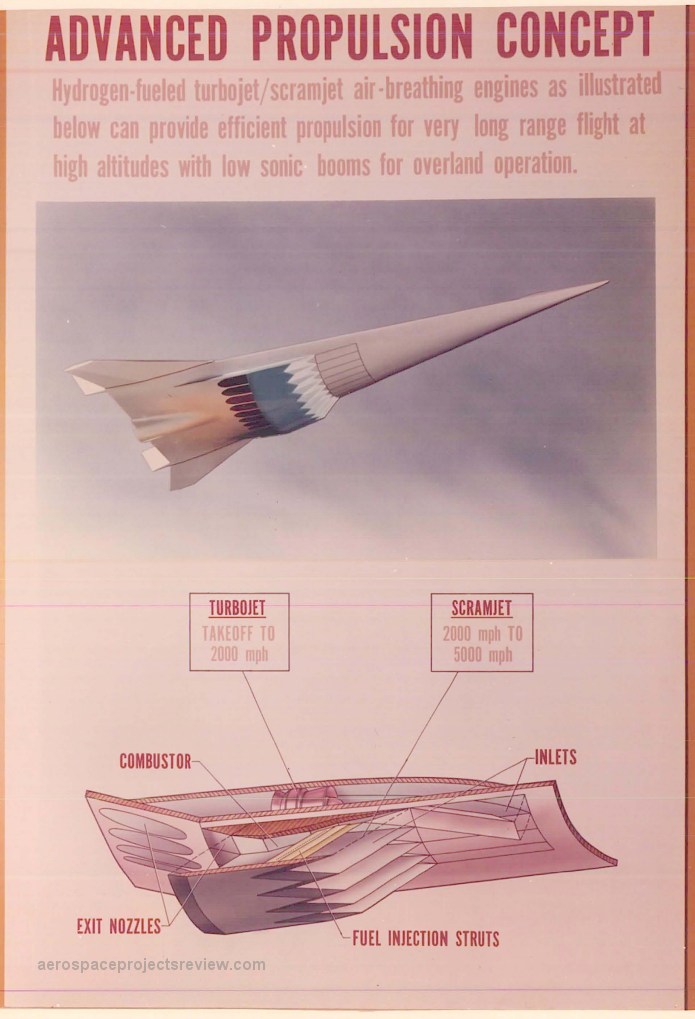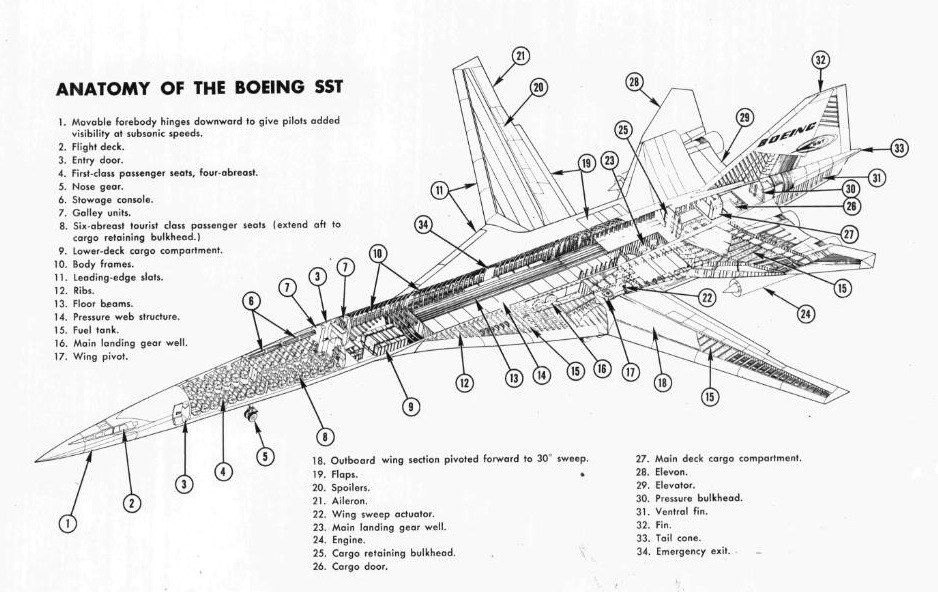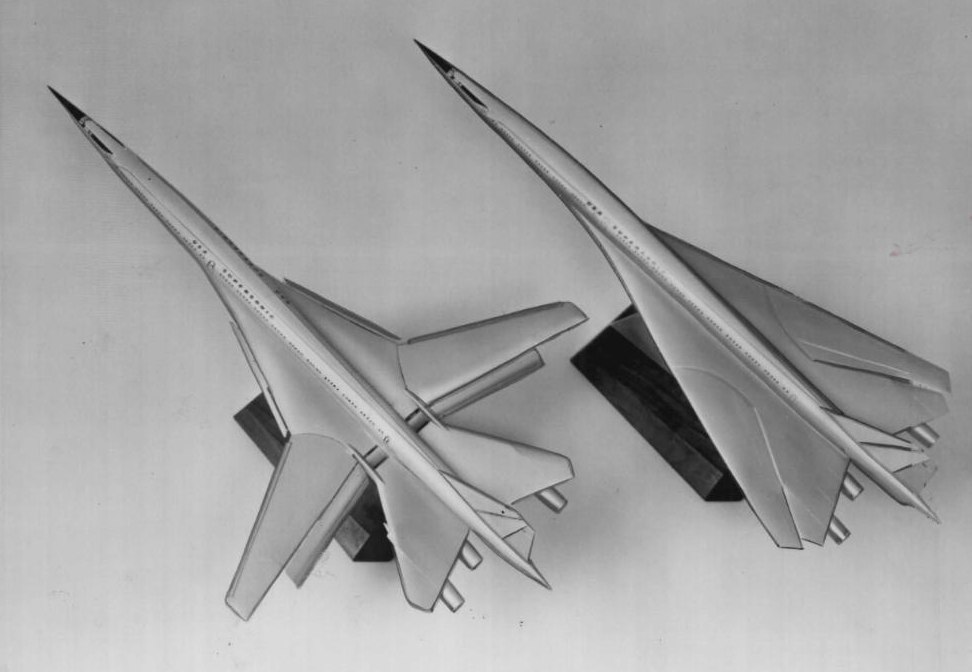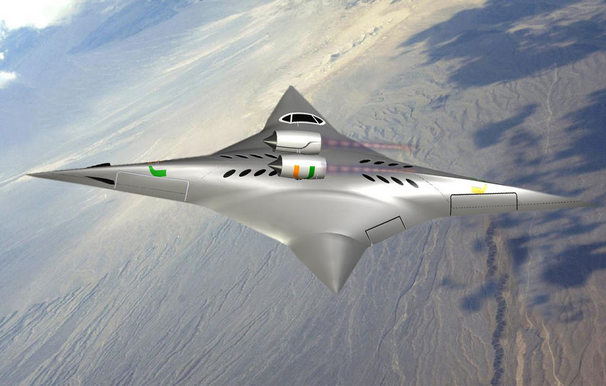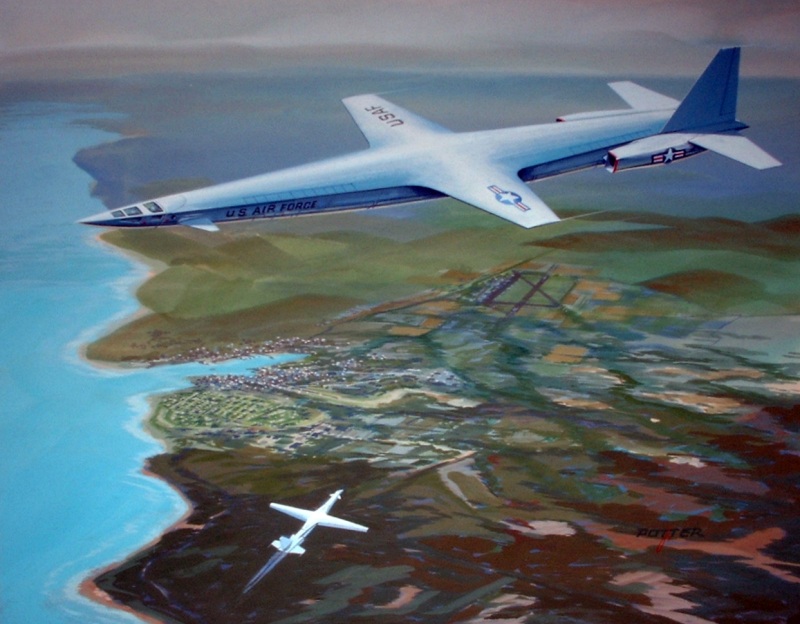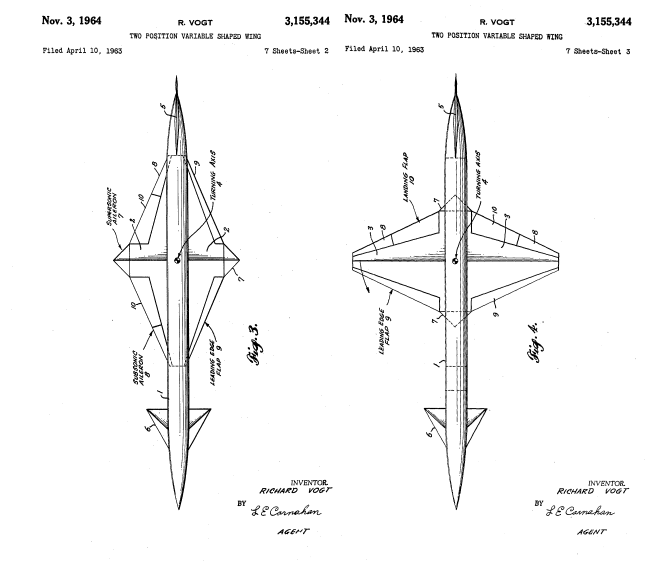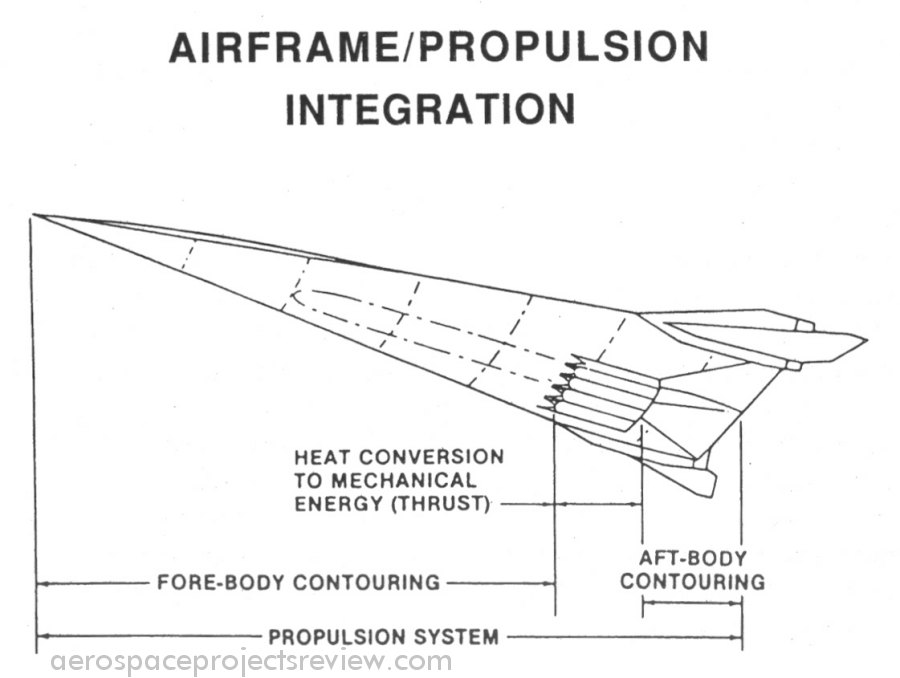Someone is selling a McDonnell-Douglas painting (the original actual painting, it seems) of an SST concept:
The aircraft uses a “parasol” wing, which was a concept that enjoyed a bit of popularity in the 1970’s. The idea: at supersonic speeds shock waves shed from the nose of the craft would impinge on the underside of the wing, adding lift and reducing fuel requirements. As memory serves, an added bonus would be that the benefit of area ruling would be in place, but without the need to actually “wasp-waist” the fuselage. Being able to produce a bland cylindrical fuselage would greatly reduce cost and stress on the large pressurized structure.
Such “favorable interference” designs would produced for fighters, SSTs and bombers, from USAF design labs to Boeing to McD to Lockheed and probably others. In time, the idea faded away; the gains in supercruise performance were apparently outweighed by cost and weight.
Note that the positioning of the engines, unusual for an SST, would also serve the favorable interference purpose: shock waves from the inlets would impinge on the wings above.
